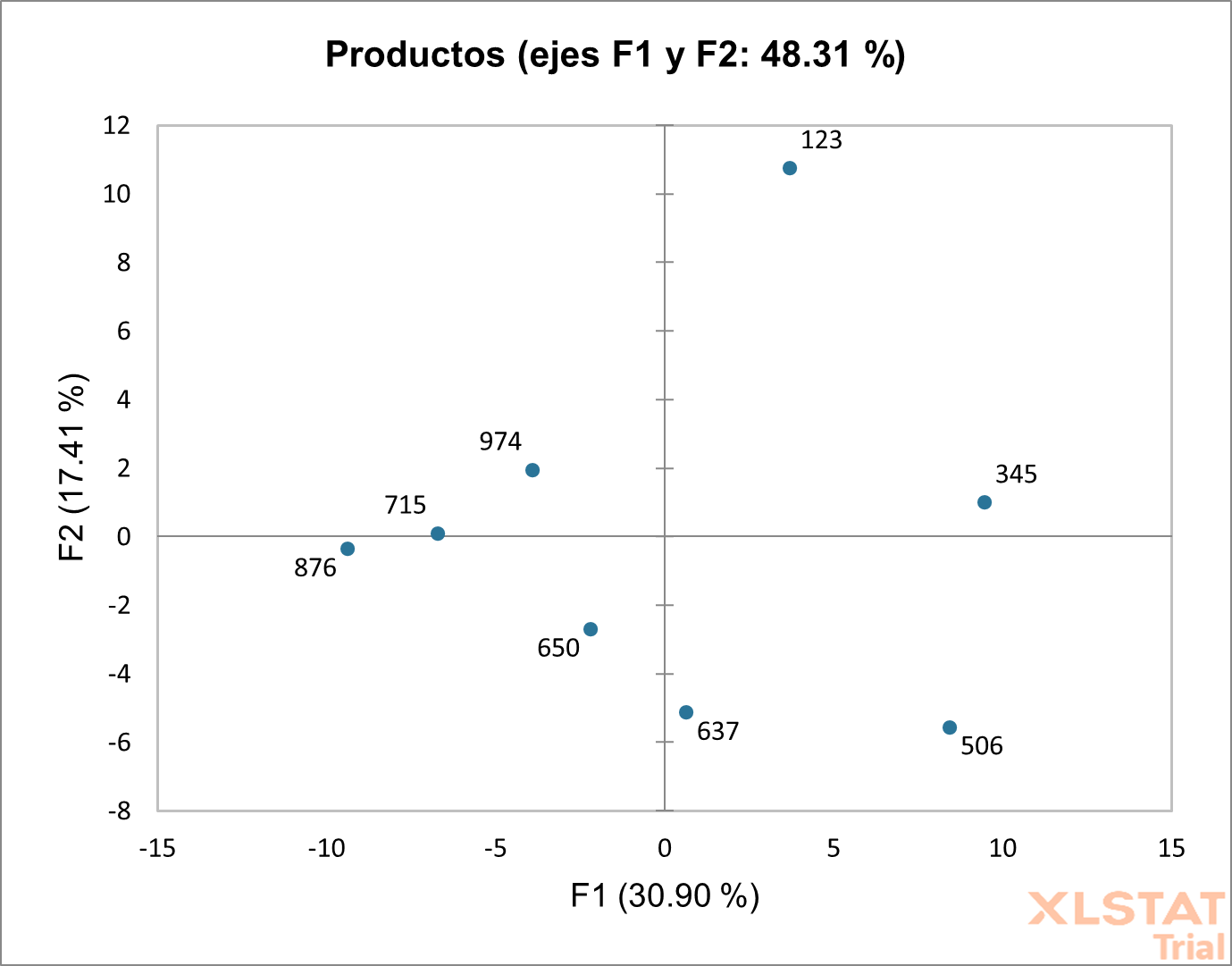Evaluation of sensory characteristics and rheological properties in chocolate coating with different percentages of cocoa and milk mixture
DOI:
https://doi.org/10.55996/dekamuagropec.v6i1.340Keywords:
Maltodextrin, flash profile, viscosityAbstract
The chocolate market exceeded 206 billion dollars, with milk chocolate standing out. Chocolates with different percentages of cocoa (50%, 60%, 70%, 80%) and milk mixture (milk powder, whey, maltodextrin) were evaluated using a randomized design with eight treatments and three replicates. The physicochemical analyses showed that the milk mixture toppings had a moisture content of 0.8% to 1%, pH of 3.5 to 4.1, °Brix between 69 and 72.5, and fat content of 20% to 36%. The toppings without milk mixture showed higher moisture (1% to 1.5%) and fat content from 17.21% to 37.5%. In terms of color, the milk-mixed toppings were lighter, with greater variation in L*, a* and b* values. Rheological analyses revealed significant differences in the fluidity parameters (n and K), with values that varied depending on the amount of cocoa and the milk mixture, evidencing changes in the texture and viscosity of the chocolate. The study reveals that cocoa and milk mixture influence the color, texture and flavor of chocolate. Milk-mixed coatings are lighter and less viscous, while non-milk-mixed coatings are more resistant. Cocoa and dairy blend affect chocolate color, texture and flavor, highlighting fatty, sweet, sour and bitter notes.
Downloads
References
Beckett, S. T. (2008). The Science of Chocolate. The Royal Society of Chemistry. https://doi.org/10.1039/9781847558053
Calderon Pino, J. (2019). Color, evaluación sensorial, fenoles totales, antocianinas, del chocolate oscuro, con leche, con aguaymanto, gongapa con diferentes tamaños de partículas [Universidad Nacional Agraria de la Selva]. http://repositorio.unas.edu.pe/handle/UNAS/1507
Califano, G., & Spence, C. (2024). Consumer preference and willingness to pay for 3D-printed chocolates: A discrete choice experiment. Future Foods, 9, 100378. https://doi.org/10.1016/j.fufo.2024.100378
de Jesus Silva, G., Gonçalves, B. H. R. F., Conceição, D. G., Fontan, G. C. R., Santos, L. S., & Ferrão, S. P. B. (2020). Multivariate analysis applied for correlations between analytical measures and sensory profile of goat milk chocolate. Journal of Food Science and Technology, 57(2), 444–453. https://doi.org/10.1007/s13197-019-04072-2
Ellis, A. C., & Gámbaro, A. (2024). Description of virgin olive oil: Descriptive evaluation by trained assessors vs flash profile using panels with diverse degrees of training. International Journal of Gastronomy and Food Science, 36, 100895. https://doi.org/10.1016/j.ijgfs.2024.100895
Gonçalves, E. V., & Lannes, S. C. da S. (2010). Chocolate rheology. Ciência e Tecnologia de Alimentos, 30(4), 845–851. https://doi.org/10.1590/S0101-20612010000400002
Jin, J., Shen, L., Ye, X., Wang, J., Hartel, R. W., & Zhao, L. (2024). Effects of surface modification of sucrose particles on chocolate morphology and fat bloom during storage. Journal of Food Engineering, 379, 112125. https://doi.org/10.1016/j.jfoodeng.2024.112125
Keijbets, E. L., Chen, J., & Vieira, J. (2010). Chocolate demoulding and effects of processing conditions. Journal of Food Engineering, 98(1), 133–140. https://doi.org/10.1016/j.jfoodeng.2009.12.019
Kiss, M., Czine, P., Balogh, P., & Szakály, Z. (2022). The connection between manufacturer and private label brands and brand loyalty in chocolate bar buying decisions – A hybrid choice approach. Appetite, 177, 106145. https://doi.org/10.1016/j.appet.2022.106145
Kiumarsi, M., Rafe, A., & Yeganehzad, S. (2017). Effect of different bulk sweeteners on the dynamic oscillatory and shear rheology of chocolate. Applied Rheology, 27(6), 1–9. https://doi.org/10.3933/APPLRHEOL-27-64123
Lapčík, L., Vašina, M., Lapčíková, B., Staněk, M., Ovsík, M., & Murtaja, Y. (2020). Study of the material engineering properties of high-density poly(ethylene)/perlite nanocomposite materials. Nanotechnology Reviews, 9(1), 1491–1499. https://doi.org/10.1515/ntrev-2020-0113
Lapčíková, B., Lapčík, L., Salek, R., Valenta, T., Lorencová, E., & Vašina, M. (2022). Physical characterization of the milk chocolate using whey powder. LWT, 154, 112669. https://doi.org/10.1016/j.lwt.2021.112669
Lares, M., Perez, E., Alvarez, C., Perozo, J., & El, S. (2016). Cambios de las propiedades fisico-quimicas y perfil de acidos grasos en cacao de Chuao, durante el beneficio. Agronomía Tropical, 63(1), 37–47. http://www.scielo.org.ve/scielo.php?script=sci_arttext&pid=S0002-192X2008000100004&lng=es&nrm=iso&tlng=es
Marques, C., Toazza, C. E. B., Bona, E., Mitterer-Daltoé, M. L., & Masson, M. L. (2024). Sensory profile estimation of yacon (Smallanthus sonchifolius) juice acidified with lactobionic acid: Combination of flash profile, E-nose and sensometrics. Food Chemistry Advances, 4, 100591. https://doi.org/10.1016/j.focha.2023.100591
Martínez Icarte, R. M. (2002). Caracterización del comportamiento reológico de sopa crema orientada a control de calidad.
Medina-Mendoza, M., Rodriguez-Pérez, R. J., Rojas-Ocampo, E., Torrejón-Valqui, L., Fernández-Jeri, A. B., Idrogo-Vásquez, G., Cayo-Colca, I. S., & Castro-Alayo, E. M. (2021). Rheological, bioactive properties and sensory preferences of dark chocolates with partial incorporation of Sacha Inchi (Plukenetia volubilis L.) oil. Heliyon, 7(2), e06154. https://doi.org/10.1016/j.heliyon.2021.e06154
Oblitas, R., Quispe Sanchez, L., Oliva, M., & Chavez, S. (2023). Efecto de la incorporación de lecitina sobre las propiedades físicas de los chocolates oscuros. Revista Científica Dékamu Agropec, 4(2), 10–16. https://doi.org/10.55996/dekamuagropec.v4i2.193
Puma-Isuiza, G. G., & Núñez-Saavedra, C. (2020). Comparación del Perfil Flash y Napping®-UPF en la caracterización sensorial de hot-dog. Revista de Investigaciones Altoandinas - Journal of High Andean Research, 22(2), 135–145. https://doi.org/10.18271/ria.2020.601
Rincón Cardona, J. A., & Herrera, M. L. (2013). Chocolate. Ciencia e Investigación, 63(2), 55–62.
Rodríguez Pérez, L. (2021). Desarrollo de metodología para estudio de vida útil acelerada en chocolates. https://uvadoc.uva.es/handle/10324/56787
Saputro, A. D., Van de Walle, D., Kadivar, S., Mensah, M. A., Van Durme, J., & Dewettinck, K. (2017). Feasibility of a small-scale production system approach for palm sugar sweetened dark chocolate. European Food Research and Technology, 243(6), 955–967. https://doi.org/10.1007/s00217-016-2812-z
Schantz, B., & Rohm, H. (2005). Influence of lecithin–PGPR blends on the rheological properties of chocolate. LWT - Food Science and Technology, 38(1), 41–45. https://doi.org/10.1016/j.lwt.2004.03.014
Schroeder, S., Schimke, L. M., Bindrich, U., Dewettinck, K., Franke, K., Heinz, V., de Walle, D. Van, & Middendorf, D. (2024). Influence of PET as single-use contact material on gloss and surface properties of chocolate. Food Structure, 40, 100375. https://doi.org/10.1016/j.foostr.2024.100375
Sözeri Atik, D., Bölük, E., Toker, O. S., Palabiyik, I., & Konar, N. (2020). Investigating the effects of Lecithin-PGPR mixture on physical properties of milk chocolate. LWT, 129, 109548. https://doi.org/10.1016/j.lwt.2020.109548
Verde, A. B., Alvim, I. D., Luccas, V., Marangoni, L., & Alves, R. M. V. (2022). The influence of formulation and packaging material on the rheological properties of milk chocolate. Applied Food Research, 2(2), 100199. https://doi.org/10.1016/j.afres.2022.100199
Yadav, A. K., Singh, J., & Yadav, S. K. (2016). Composition, nutritional and therapeutic values of goat milk: A review. Asian Journal of Dairy and Food Research, 35(2), 96–102. https://doi.org/10.18805/ajdfr.v35i2.10719

Downloads
Published
How to Cite
Issue
Section
License
Copyright (c) 2025 Yajayra Ramirez Arroyo, Fiorella Milagros Artica Teves, Marita Ada Shirley Diaz de la Vega Huanca

This work is licensed under a Creative Commons Attribution 4.0 International License.
Los autores que publican en esta revista aceptan los siguientes términos:
- Los autores conservan los derechos de autor y conceden a la revista el derecho publicación con la obra, simultáneamente licenciada bajo una licencia de Creative Commons CC By que permite a otros compartir el trabajo, pero citando la publicación inicial en esta revista.
- Los autores pueden celebrar acuerdos contractuales adicionales separados para la distribución no exclusiva de la versión publicada de la obra de la revista (por ejemplo, publicarla en un repositorio institucional o publicarla en un libro), pero citando la publicación inicial en esta revista.
- Se permite y anima a los autores a publicar su trabajo en línea (por ejemplo, en repositorios institucionales o en su sitio web) antes y durante el proceso de presentación, ya que puede conducir a intercambios productivos, así como una mayor citación del trabajo publicado (https://web-archive.southampton.ac.uk/opcit.eprints.org/oacitation-biblio.html)














